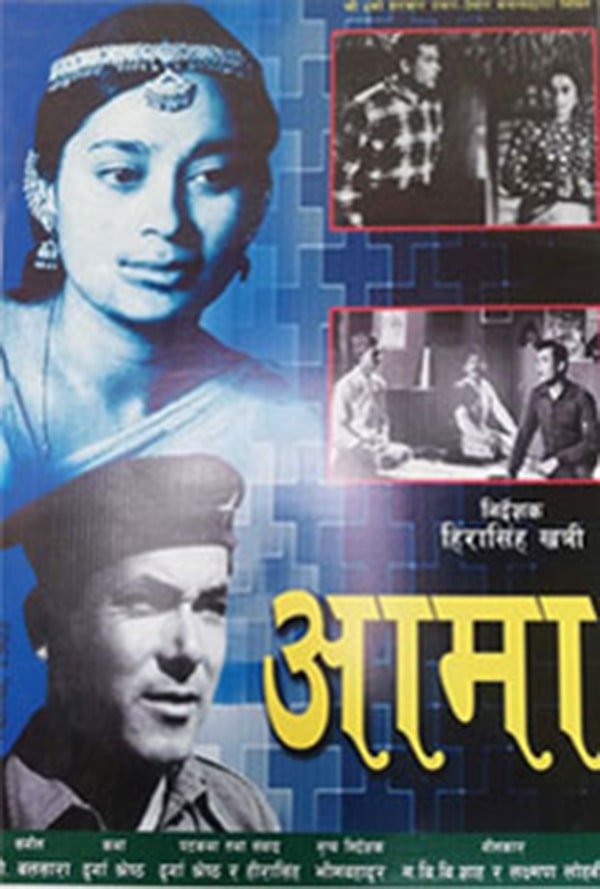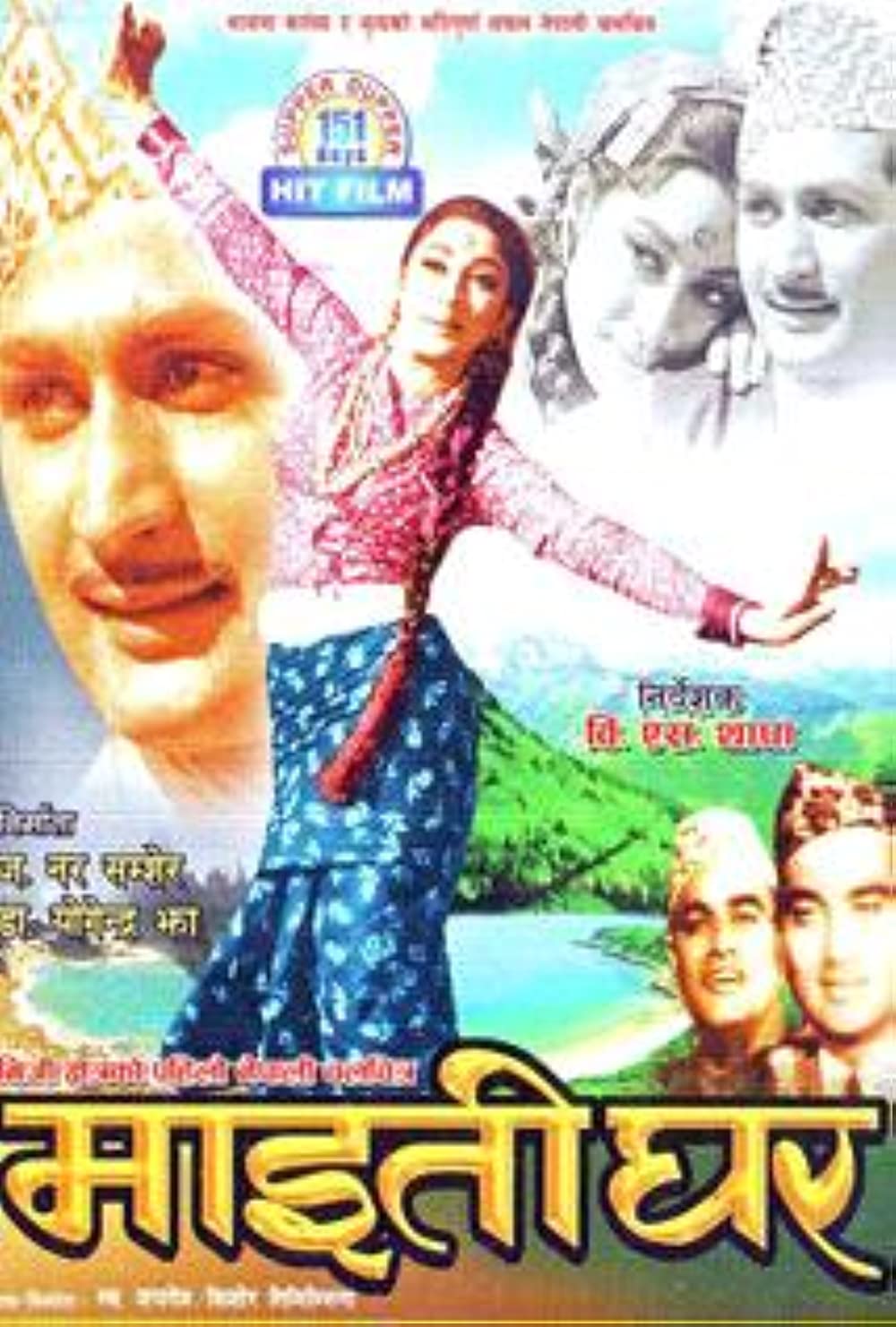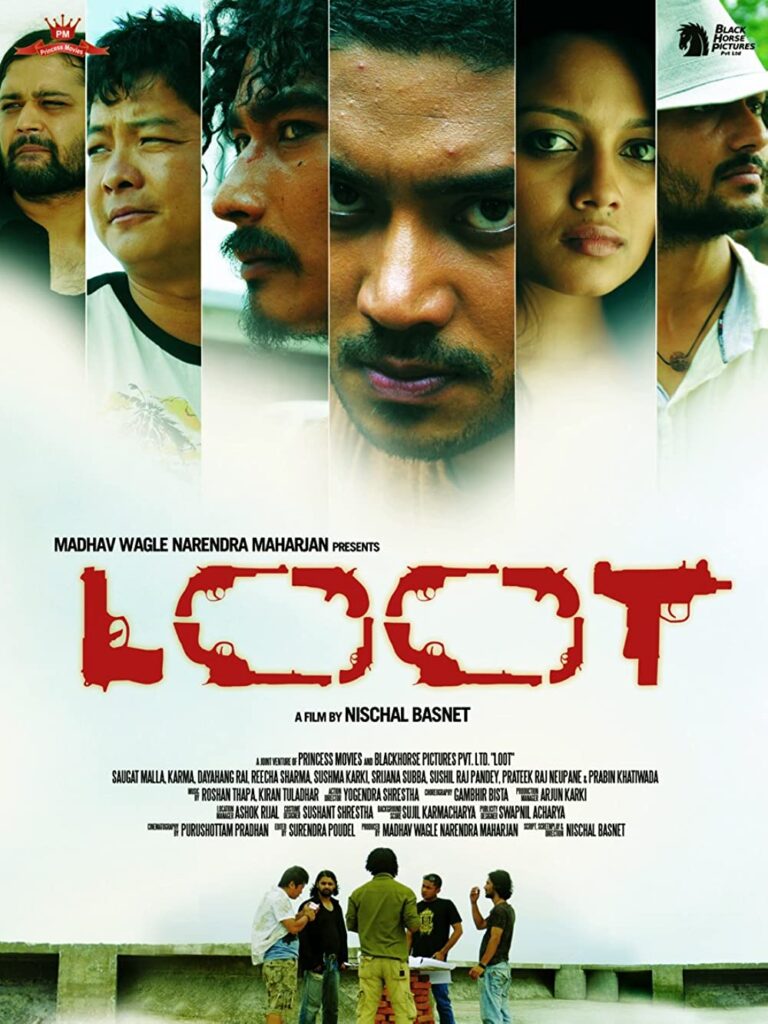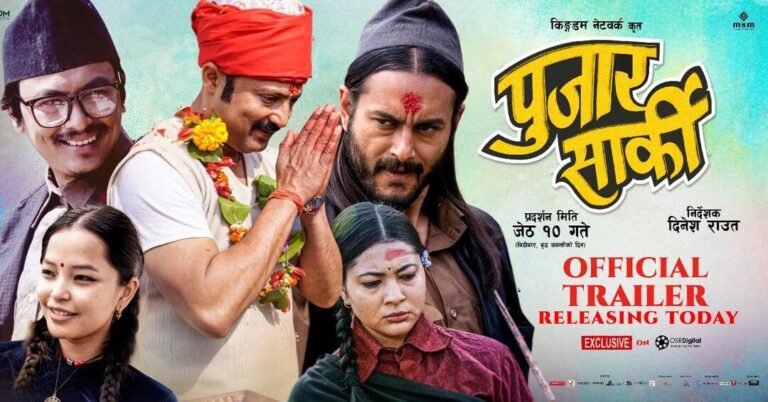History and Evolution of Nepali Cinema (Nepali Movie)

Nepali Cinema also known as Kollywood or “Nepali Chalchitra” (Nepali: नेपाली चलचित्र) is the Nepali Language film industry in Nepal. Janakpur in the Maithili language is known as Mithilawood. The Nepali movie industry has its own place in the cultural heritage of Nepal.
Beginning of Nepali Film Industry (First Nepali Movie):

The making of Nepalese films is said to have begun with Harishchandra, which was the first Nepali-language movie to be shot. It was produced from Kolkata, India and was released on 14 September 1951.
The first Nepali-language movie made in Nepal was ‘Aama‘ (Mother), which was released on 7 October 1964, starring Shiva Shankar Manandhar, Bhuwan Chand, Chaitya Devi and Basundhara Bhusal who are regarded as the first actors in the Nepali film industry. The film was directed by Hira Singh Khatri and written by Durga Shrestha and Chaitya Devi and produced by the Information Department of His Majesty’s Government of Nepal (now Government of Nepal (GoN)).
Rise of Private Banner in the Nepali Film Industry:

‘Maitighar‘ become the first film to be produced under a private banner, which was released at the end of 1966 by Sumonanjali Films Pvt. Ltd. Although it was a Nepalese movie, it had many Indians contributed toward its making. Mala Sinha played the lead role, along with Chidambar Prasad Lohani, whom she later married. It had special appearances of Sunil Dutt and comedian Rajendra Nath. The film was directed by B.S. Thapa and the music was scored by Jaidev, a veteran maestro, it had Lata Mangeshkar, Asha Bhosle, Usha Mangeshkar, and Manna Dey, all of whom were established Indian singers, doing the playback singing with Prem Dhoj Pradhan, C.P. Lohani and Aruna Lama.
In 1971, the Nepal government established the Royal Nepal Film Corporation and produced the first film ‘Mann Ko Bandh’ which was premiered in 1973 in Kathmandu. The film was directed by Jay Rana and music was composed by Nati Kaji and Shiva Shankar, while the film’s background music scored was done by Amber Gurung.
Mann Ko Bandh was followed by Kumari (the first Eastman color Nepali film) in 1978, Sindoor in 1980, and Jeevan Rekha in a series, and “Badlindo Aakash” in 1984. Their success opened up the avenue for private parties to enter into filmmaking as an industrial endeavour. Besides this, the black-and-white movie ‘Paral Ko Aago’ proved to be a great success due to its story and melodious music.
‘Paral Ko Aago’ was released in 1978, based on a popular short story of the same name by Guru Prasad Mainali, starring Tanka Sharma, Basundhara Bhusal, Susmita Dhakal, I.K. Singh, Menuka Pradhan. The film was written and directed by Pratap Subba and produced by Cineroma. The music was directed by Shanti Thatal (She also became the first female music director in Nepali movies), the lyrics were prepared by Manbahadur Mukhiya and Indra Thapaliya and the songs were sung by Aruna Lama, Dawa Gyalmo, Pema Lama, Shankar Gurung and Deepa Gahatraj (Jha).
With the start of the 1980s, some relatively more creative films were made and they became successful, too. As the number of private companies in the Nepali film industry increased, they made more films, due to which, the attraction of the Nepali audience towards the film increased even more.
Golden Era of the Nepali Film Industry:
Badlindo Aakash, Samjhana, Kusume Rumal, Lahure, Kanchhi, Basudev, Saino and Koseli, which were released between 1984 and 1993, were very popular. The leading actors were Bhuwan K.C. and Tripti Nadakar, whose on-screen chemistry saw them being dubbed the “golden couple” of the industry. In the later years of the decade, the industry saw the rise of Rajesh Hamal and Karishma Manandhar.
In 1990, the people’s movement brought the monarchy to its knees and democracy was restored. Society started to become open and vibrant. There was unprecedented growth in the number of productions. Within three years, some 140 films were made. Distribution started to develop. Cinema halls increased to more than 300.
Greatest Downfall:
The start of the Maoist insurgency in Nepal in the mid-1990s was the beginning of the downfall of the domestic film industry. In the period of war and conflict, a very small number of films were made, and audience numbers fell sharply. It resulted in lower budgets and even lower performances, which resulted in even smaller audiences. In the later years of the conflict, the production and release of Nepali films had almost come to a standstill. Many actors and filmmakers left the country in search for work abroad. Actors like Saroj Khanal, Shiva Shrestha, Karishma Manandhar, Tripti Nadakar, Kristi Mainali and Gauri Malla had little work.
Historic movies like Balidaan and Seema Rekha made during this period were appreciated by critics and the audience. the 90s was majorly ruled by Rajesh Hamal, Bhuwan K.C., Shiva Shrestha, Haribansha Acharya, and Mandan Krishna Shrestha were famous artists of that time, and equally popular today.
Emerging Hope of Nepali Film Industry:
In 2000-2001, Nepali films ‘Darpan Chayya’ and ‘Jindagani’ have helped to uplift the Nepali film industry, which was also become highest grossing Nepali film at that time. ‘Jindagani’ was directed and produced by Ujwal Ghimire, and ‘Darpan Chaya’ was directed by Tulsi Ghimire and starred Dilip Rayamajhi, Niruta Singh and Uttam Pradhan. The film’s music is popular till today and remains one of the greatest Nepalese classic films ever.
By 2006, slowly Nepali film industry started to return to its previous state, and more films were being made and released. After the historic success of Darpan Chaya, the production of romantic and romantic comedy movies increased in a bigger way. Some of the successful post-2006 films include Kagbeni, Sano Sansar, Mero Euta Saathi Cha, First Love and Kohi Mero.
The early 2000s saw the rise of Nikhil Upreti, Shree Krishna Shrestha, Biraj Bhatt, Ramit Dhungana and actresses like Jharana Thapa, Rekha Thapa, Arunima Lamsal, Sanchita Luitel, Rejina Upreti etc. Though the film industry saw a dull phase. Such phase was mainly accused of lack of creativity in Nepali movies with routine action films that were not able to excite an audience.
Biggest Comeback:

In 2012, the heist comedy film ‘Loot‘ completely change the Nepali film industry. The film was written and directed by Nischal Basnet, featuring Saugat Malla, Dayahang Rai, Karma Shakya, Prateek Raj Neupane, Sushil Raj Pandey, Reecha Sharma, Srijana Subba, Praveen Khatiwada and Sushma Karki. The story, direction and acting of the film were next level, that is why the film is credited for bringing the audience back to theatres.
Other successful films such like Loot were Andaaj, Chapali Height, Nai Nabhannu La series, Kohinoor, Kabaddi series, Wada No 6, Chhakka Panja series was the highest-grossing movies till date and Kalo Pothi became critically acclaimed in the domestic market as well as among the international diaspora. The US-Nepali documentary Manakamana, about pilgrims on the Manakamana Cable Car, was released in 2013 and received positive reviews.
In recent times many notable films are being made in Nepal. In December 2016, Bijuli Machine, Nepal’s first science-fiction film with a social story was released and ran successfully in cinemas. The movie was directed and written by Navin Awal with Santosh Lamichhane as a scientific consultant. It was reported that the movie set a trend in Nepali films by making a movie with a low budget, without an item song, stereotypical fights or a romantic story, rather with an authentic Nepali story inspired by the problems faced in the society, like electricity power cuts, and still succeeded to entertain the audience.
Likewise, Kalo Pothi (Black Hen) by Min Bahadur Bham, Highway by Deepak Rauniyar, Nivna Lageko Diyo (Dying Candle) by Naresh K.C. and Seto Surya (White Sun) by Deepak Rauniyar has been officially selected to major international film festivals like Venice, Berlin, Toronto international film festival and winning an award at Singapore international film festival. The Legend of Shankhadhar is reported to be the first animated Nepali film.
COVID-19 Impact in the Nepali Film Industry:
The first known case was identified in Wuhan, China, in December 2019. The first case in Nepal was confirmed on 23 January 2020 when a 31-year-old student, who had returned to Kathmandu from Wuhan on 9 January, tested positive for the disease.
After the increase of Covid-19, on September 1, the Government of Nepal announced an end to a country-wide lockdown. All the cinema halls are totally shut down. A total of around 150 halls across the country remain temporarily closed, while 30 to 35 of them have permanently shut their doors to the general public. Around 35,000 people have been directly involved in the film industry and more than 200,000 people are indirectly dependent, pushing into unemployment. Because of the Covid-19 and lockdown, more than Rs 2 billion invested in the industry have been frozen.
The President of Nepal film Producer’s Association, directors, and actor Akash Adhikari said, in 2021 from March to July, 25 films were ready to release but productions have been postponed indefinitely because of the pandemic. He further informed that there is a backlog of some 70 to 80 films awaiting commercial release.
However, the positive impact of the Covid-19 is now filmmakers and producers are interested and involved in streaming platforms. According to the source, the filmmakers are developing apps themselves where individuals can pay a small amount to watch films. The giant streaming platforms Netflix, Amazon Prime Video, Disney+Hotstar are growing next level in the Covid-19, and Nepali films also have begun streaming on the Malaysian site Iflix.
The video streaming platform YouTube is the main source to stream after the theatrical release. Digital distribution companies such as OSR Digital and Highlights Nepal buy and stream Nepali films on YouTube. So this is the right time to develop the subscription streaming platform in Nepal.
Film Development Board:
Film Development Board (FDB) is established on 30 June 2000 by the Government of Nepal according to the existed Motion Picture (Production, Exhibition and Distribution) Act amended on 20th November 1991. The Board attempts to bridge the gap between film entrepreneurship and government bureaucracy.
Conclusion:
Nepal is a country where international films make millions of dollars, where international films are filmed here, which trades millions of dollars. If international movies are filmed and released here and earn millions of dollars then why not Nepali films. Nepal has a huge potential for the film industry, they can compete with the international film industry.
As we know, Nepali films have always been lacking a young audience. However, with the rise of technology and software, social media and new generation artists like Saugat Malla, Dayahang Rai, Anmol KC, Pradeep Khadka, Upsana Singh Thakuri, Samragyee RL Rana and others, young generation people have started showing interest in Nepali movies, and it should be taken as a positive sign for the development of the local film industries. Besides, the youth have, of late, been exploring stories of indigenous people in movies. Hope for the best!!!
FAQs
Which is the highest grossing Nepali movie?
Kabaddi 4: The Final Match is the highest-grossing Nepalese film grossing रु 21.39 Crore, directed by Ram Babu Gurung.
When was Nepal flim corporation established?
The government of Nepal established Royal Nepal Film Corporation in 1971. This body started to produce Nepali Cinema in different periods of time: Maan Ko Bandahan (1973), Kumari (1977), Sindoor (1980) and Jivan Rekha (1980).
Who is the first heroine of Nepal?
Bhuwan Chand, Chaitya Devi and Basundhara Bhusal are the first actresses in the Nepali film industry. The actresses are featured in the first Nepali movie Aama (mother), released on 7 October 1964. It was produced by the Information Department of His Majesty’s Government of Nepal (now Government of Nepal (GoN)). It was directed by Hira Singh Khatri and written by Durga Shrestha and Chaitya Devi.
Who is the first hero of Nepal?
Shiva Shankar Manandhar is the first actor (hero) in the Nepali film industry. His first movie as well as the first Nepali movie Aama (mother), was released on 7 October 1964. It was produced by the Information Department of His Majesty’s Government of Nepal (now Government of Nepal (GoN)). It was directed by Hira Singh Khatri and written by Durga Shrestha and Chaitya Devi.
Which was the first Nepali Colour movie?
Kumari is the first Eastman color Nepali film, released in 1978.
What is Nepali film called?
Nepali Cinema also known as Kollywood or “Nepali Chalchitra” (Nepali: नेपाली चलचित्र) is the Nepali Language film industry in Nepal. The Nepali movie industry has its own place in the cultural heritage of Nepal.
Who is the youngest movie director in Nepal?
Guinness World Records writes, ‘The youngest director of a professionally made feature length film is Saugat Bista (Nepal, b. 6 January 2007), who was aged 7 years and 340 days when Love you baba (Nepal, 2014) was released in cinemas on 12 December 2014. Saugat is also a member of the Film Directors Guild of Nepal’.






